It’s January, and while lots of people have heard about the City Loop closure, less well-publicised are the shutdowns on the Hurstbridge, Alamein, Cranbourne/Pakenham and Frankston lines… plus more lines in the evenings.
Anyway, here’s something related – an expansion of a comment answer I left on a recent post.
The question was about how skyrail can be built while trains continue to run underneath. I thought I’d share a few photos from during the Dandenong line construction around Carnegie-Murrumbeena.
They had a bit of space to play with – not enough to do four tracks without land acquisition, but enough to build the two elevated tracks with gaps for water and sunlight to reach the grass and plantings in the public space below the new line.
It also meant they could keep trains running during much of the construction.
Early on they replaced the overhead stanchions with a special design:
The lower height at the sides allowed the new track structure to be put in place. The old station platforms had to be narrowed, but were mostly able to keep operating.
The new elevated island platform was built above the old tracks, at a higher level than the new tracks.
For much of the distance between stations, the new tracks and their support structures were built on either side of the old ones.
Once the new structure was completely in place, trains could run on it, while the old track and overhead structures were removed, and landscaping took place.
It was a bit different in the Noble Park section. The rail corridor there was wider, allowing them to build the new tracks next to the old ones rather than above them.
At Clayton as well, the new structure was built alongside the old rail line and station.
Overall the main part of skyrail construction probably took longer to build than the rail under (trenches) elsewhere on the network. But rail under requires a lot more preparatory work to move underground services first, so the big 6+ week rail shutdown is often accompanied by lots of smaller shutdowns.
In contrast, during most of the skyrail construction, trains were able to keep running. The main periods of no trains running was during construction of the ramps to carry trains to and from the elevated sections, which necessitated removal of the old track.
As I said in the earlier post, each method has pros and cons, and what works in one location might not work in another.
It’s not perfect – and much of the Cranbourne/Pakenham line is about to close again for several weeks for other upgrades, principally the rationalisation at Caulfield junction, and signalling work.
But there’s clearly a benefit from keeping trains running as much as possible during construction, and skyrail can help with that.



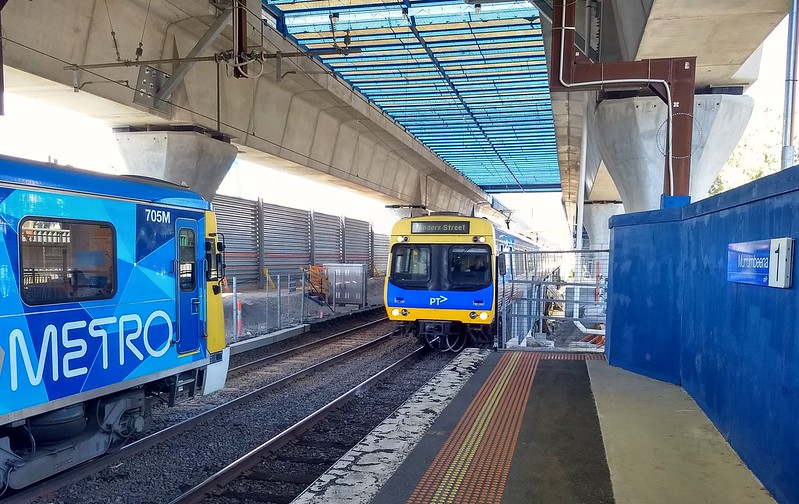
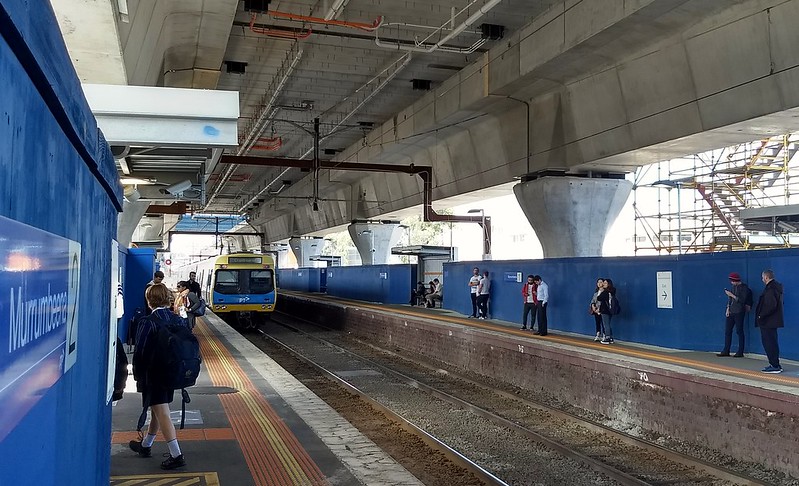
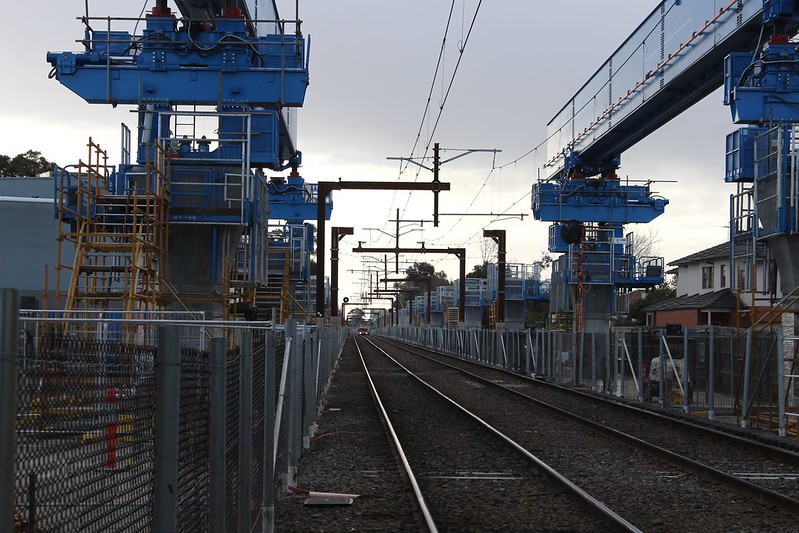

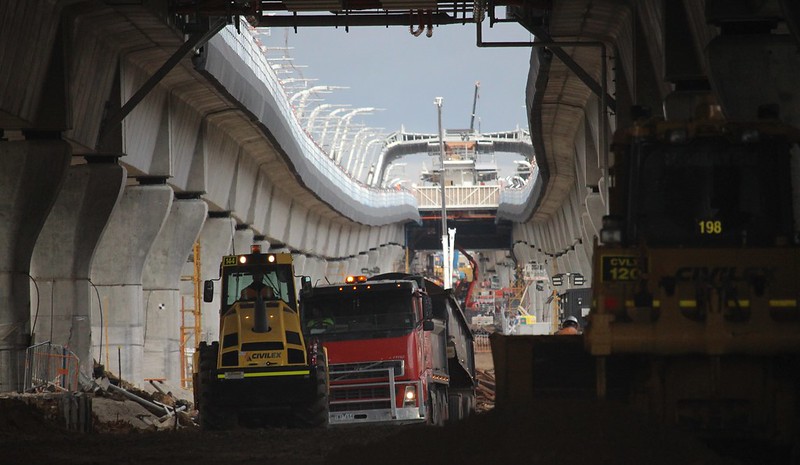


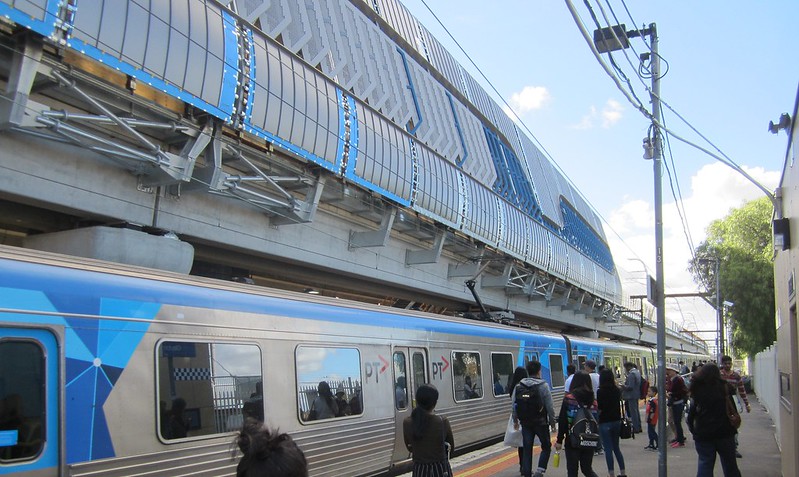
11 replies on “Building skyrail while the trains keep running”
I estimated that is would have taken at least 600 buses per day to replace the number of passenger trips on the Pakenham/Cranbourne line building a trench. Would not have had as much utility as the Skyrail does now. I moved to Hughesdale about July 2018 and got to use the new station when it opened. Would walk all the way to Carnegie underneath the Skyrail, much better than the road. Not long after it opened gates started appearing in fences next to the track and then fences got replaced with see through ones.
That’s not entirely true.
Many weekends saw buses replace trains in that Oakleigh to Caulfield section. Often multiple weekends in a row.
That year(2016 or 2017?) During the football season when most of the work was happening it was a bus instead of a train. From memory it was at least half that season had buses.
@Brad, good point. Quite a few weekend and evening closures in 2017-18, so it didn’t eliminate closures by any means. I do think though that for the removal of 9 crossings, it was less time than it would have been using other methods.
The Parkdale skyrail (Warrigal Rd and Parkers Rd) will probably break the pattern. The new elevated rail will be centrally located in the rail corridor, with both tracks to be supported on single piers – right in the same alignment as the current tracks. Unless they temporarily slew the current tracks to one side (which they did when build the Seaford Rd bridge), there will probably be an extended shutdown to build Parkdale skyrail.
Rationalisation at Caulfield Junction? Should be we afraid?
@Andrew, there is a real concern that this will remove options at Caulfield for operations during disruptions. Currently they can switch some trains to other pair of tracks to/from the City if there’s a problem – this will remove that option.
As I understand it, it’s primarily related to the high capacity signalling upgrades for the Cranbourne/Pakenham tracks, and separation from the Frankston tracks makes this possible/easier.
It should also slightly increase train speeds, and reduce ongoing maintenance costs, but time will tell if the loss of flexibility makes that worth it.
The new Deer Park elevated section is being built next to the existing, so hopefully Geelong shutdowns are kept to a minimum.
During the current state government’s LCR works, the skyrail has definitely given the best possible results in almost all cases, unlike for example, Collingwood or Canterbury which are utterly awful eyesores and provided no benefit from having an elevated railway.
I’m curious however, what the plan is for future rail duplication, for freight lines, etc.?
Further to my earlier comment, we have just learned today that the Frankston line will be slewed around the Parkdale construction site, allowing construction of the piers and elevated section to occur, while the line remains open. The slewed track will be on the east side. https://www.facebook.com/reel/3222491871394910/
New overhead stanchions have been placed at various stations and level crossings along the Sandringham line. Could this suggest that some level crossing removals are in the pipeline for this line?
I doubt very much that they’re about to start removing any on the Sandringham line, given nothing’s been announced. They might be doing power upgrade works… when the Metro tunnel opens in 2025, the Sandy line will link through to Newport, and more trains might end up on the line.
(On the tram network, the switch to bigger trams also means more power required. Not sure how much this is an issue for the newer trains.)